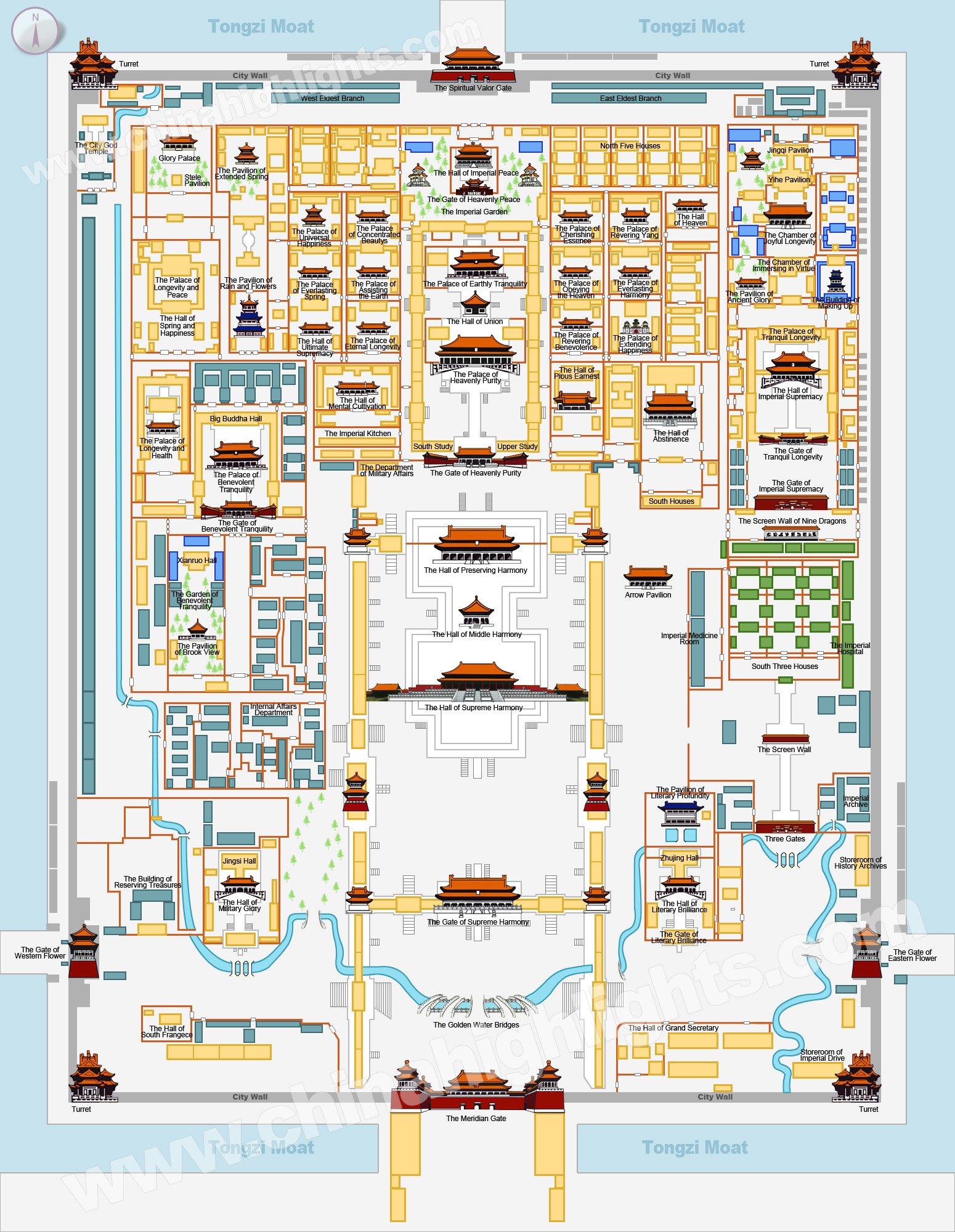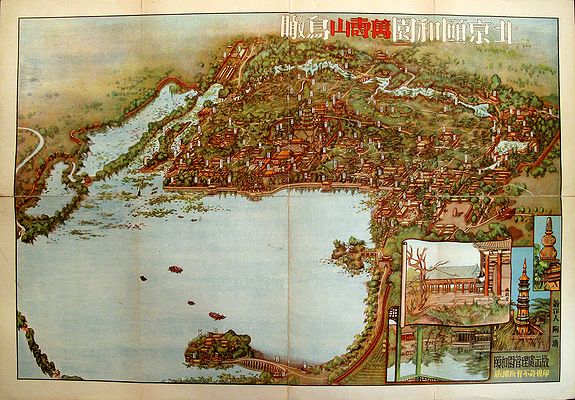Travel Dates 12th-14th April 2012.
Click on any picture to see a large version.
The name of the Forbidden City reflects the period when only the Emperor (or occasionally a Dowager Empress) and the Emperor's concubines, ministers and eunuchs were allowed within the walls on pain of death. Construction was started in 1406 by Zhu De, the son of the previous Emperor who had moved the capital south to Nanjing. Zhu Di usurped his father in 1402 and, after completing construction of the Forbidden City in 1420 slowly moved the capital back to Beijing.
As a personal aside, I've never understood that move. Beijing was much closer to the Mongol and Manchu threats from the north and north-west, with both consequently ruling China in different eras, and the climate, compared to Nanjing, is very harsh. But no-one argues with the Emperor, thus Beijing became the capital and remains so to this day.
China was ruled from the thrones within these walls from 1420 until 1911, apart from occasional breaks during wars, invasions by foreign devils in 1860 and 1900, and some periods of anarchy.
The last Emperor remained, under sufferance, until evicted in 1924 and the process of turning the complex into a museum began in 1925. Over the centuries it was damaged many times and some sections were burnt to the ground, but it has been reconstructed faithfully to the original design. The walls enclose 72 hectares (~180 acres) with 980 buildings including about 9000 rooms. The outer, smaller buildings were for the staff. The Emperor very rarely left the inner Palace rooms.
Diagram source
We strolled through the complex for a few hours, discovering a small section with a cafe for lunch. Where possible we avoided the large organised tour groups, mainly Chinese, and took our time.
At the risk of lowering the tone of this post, two incidents reminded us that toilet matters are viewed differently in China. One of the first things we noticed on arriving in China was the lack of toddlers in nappies. There were some, but most wore trousers with a split at the rear. When nature called their mothers supervised as they simply squatted where they were. In the more refined areas they were led to the side of the footpath or the gutter. We learned to watch where we stepped. In the Forbidden city this seemed to be frowned on and we noticed several parents with supplies of tissues and a plastic bag, using them to perform the same functions as we would when walking the dog. The Forbidden City was the only place I noted that extra care. We were surprised, while sitting for a rest between Palaces, when a couple appeared embarrassed and apologised to us when their youngster just missed our shoes.
It was also the only place I saw a four star rest room. Actually, it was the only place in China I saw a rest room with any stars at all.
After a long but pleasant day we grabbed a cheap cab at the north entrance for the short trip back to the hotel.
This was one of the more relaxed days
of the trip. Which is exactly what the ancient Emperors wanted their Summer
Palace to be. A place to spend their summers lazing beside a lake.
We decided to blow the budget and take
a cab. The Summer Palace is about 25km (15 miles) from Wangfujing
Street. The fare was reasonable, but our driver dropped us about 800m
away around a corner from the entrance when a fare waved her down. She refused to take us
any further when she found her new passenger wanted to go back to the
city. So we went for a walk after asking directions of a passing
stranger.
We were lucky to arrive on a day when
it was not overcrowded. For the next hour we wandered leisurely
around the grounds and gardens.
Source.
I hired one of the
electric boats for an hour; if I recall correctly it cost 300RMB.. Kunming Lake is far too big to explore in an hour. We stayed in the northern section.
We cruised slowly down towards the Seventeen-Arch Bridge then wandered past Nanhu Island, up the western shore and back via the marble ship and the massive hillside palaces. It is a pleasant and relaxing way to spend an hour. I can see why the Emperors and the Dowager Empress liked the place.
The original imitation boat in the lake was built in 1755 as a wooden and marble representation of a sailing ship on a base of huge stones. A prominent Tang Dynasty prime minister, Wei Zheng, once said, "Water can carry the boat as well as overturn it." to remind the Emperor that water symbolising the common people can support a good
emperor or overthrow a bad emperor.
In 1860 a fire resulted in all of the wooden structure being destroyed and only the marble hull and support stones remaining. In 1893 the Empress Dowager Cixi was rather far removed from the reality of the world outside the Forbidden City and the Summer Palace. She decided to use the funds meant to rebuild the Navy to build this lavishly ornate marble boat and expand the Summer Palace. When the Navy complained she presented them with the boat.
Not surprisingly the water-borne under-funded Navy was totally destroyed in a sea battle seven years later.
It was an enjoyable and pleasant visit.
Cheers, Alan



































the ming emperor moved the capital to beijing from nanjing because he took the throne from his nephew, i think. his military forces were in beijing
ReplyDeleteA lovely blog.... I remember the Last Emperor of China, Pu Yi, once said: "After making a very poor show as emperor for three years I made a very poor show of abdicating. One incident of those last days stands out clearly in my mind."
ReplyDeleteI tried to write a blog about him, hope you like it: https://stenote.blogspot.com/2018/09/an-interview-with-pu-yi.html